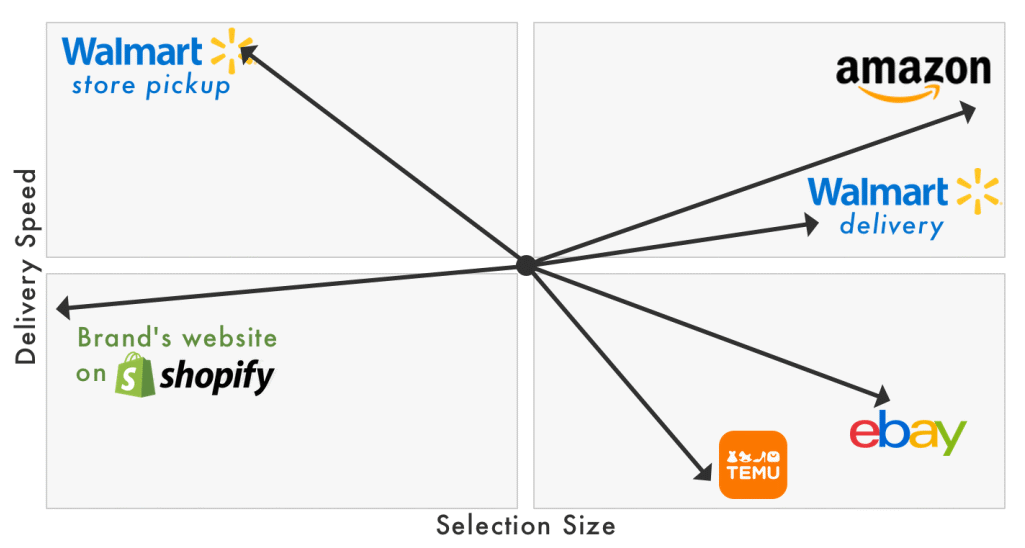On May 25, Amazon announced the "2024 Amazon Export Cross-Border Logistics Accelerator Program" in China. This plan includes a series of logistics innovations and initiatives to enhance localized services and better respond to sellers' cross-border logistics and warehousing needs.
The highlight for sellers in this plan is the addition of eight new large-item warehouses in the western U.S. specifically for the peak season, meeting the delivery needs of sellers during busy times.
With just a month left before the cut-off time for Amazon Prime Day, the end-point FBA warehouses have already started experiencing a large-scale "warehouse out of space" situation, causing anxiety among sellers due to deleted or rescheduled booking orders. The announcement of these eight new warehouses is welcome news, and we look forward to their performance in the upcoming peak season.
Amazon's ongoing focus on "speed" has built a moat that sets it apart from its competitors.
Deleted or rescheduled booking orders
Deleted or rescheduled booking orders are a result of Amazon's warehouses running out of space. Warehouses are unable to process incoming goods in a timely manner, leading to some booking orders being deleted or rescheduled. Deleted orders need to be rebooked, which, based on past experience before Amazon Prime Day promotions, usually takes 2-5 days. Rescheduled orders generally succeed in delivering goods within 2-3 days.
While the "warehouse out of space" situation is a recurring issue during Amazon's peak seasons, there are some measures sellers can take to mitigate the risk of booking order deletions. For instance, after creating a shipment and knowing the assigned Amazon warehouse code, sellers can assess the risk of warehouse space shortage during peak seasons based on current holidays. If there's a risk, sellers can change the shipping method to reduce the likelihood of deleted or rescheduled booking orders.
Faster delivery times are changing people's behaviors
Amazon's same-day and next-day delivery services are widening the gap with other e-commerce platforms. Doug Herrington, CEO of Amazon Global Stores, wrote on Monday: "In March, nearly 60% of Prime member orders in the largest 60 urban areas in the U.S. were delivered the same day or the next day." This is an increase from "more than half" in the second quarter of 2023, the last time the company discussed this topic.
Amazon's bet is that faster delivery times will alter consumer behavior. Nearly 20 years ago, in 2005, Amazon launched its Prime membership with free two-day delivery. At the same time, Amazon has been striving to replace Google in shopping searches, offering products for every imaginable search phrase. It managed to do this a few years ago, thanks largely to market forces. The next step is to make delivery times fast enough to change when and how often shoppers use it.
Amazon CEO Andy Jassy, discussing first-quarter results, said: "Because we can get goods into customers' hands so quickly, customers choose Amazon more frequently to meet their shopping needs, and we can see results in various aspects." This includes the rapid growth of our everyday essentials business, as well as the continued increase in purchase frequency and total spending by Prime members.
Logistics and goods are both parts of the product
On the surface, every retailer seems the same, selling a variety of physical goods. However, online retailers differ when it comes to the range of choices and delivery speed. Amazon is renowned for its nearly endless selection and swift delivery for most products. Fast delivery is not a linear improvement; the difference between two-day and same-day delivery is structural for retailers and behavioral for shoppers.

Shopping on Walmart online presents two experiences: quick but limited pick-up from stores and slower but wider selection from general e-commerce (half of Walmart's online orders are fulfilled from a store). Direct mail services from China like Temu, along with AliExpress and Shein, offer increasing choices, but delivery times exceed five days, sometimes even weeks. Lastly, purchasing from brand websites has many advantages, but these sites only sell a small number of items, so they can't compete with large e-commerce platforms.
Logistics, like the product itself, is part of the commodity. Amazon is working to differentiate itself from other companies by delivering more goods faster. Last year, Amazon delivered over 7 billion same-day or next-day items worldwide. The number of shipments in the first quarter of this year has already exceeded 2 billion, so it's likely to surpass 2023.
Companies like Temu can't match Amazon's delivery speed, and Walmart's store pickup service can't significantly expand the range of choices. Shoppers may still choose them, or many other companies, but Amazon's biggest saving grace is that it remains the default way most people shop, most of the time.









